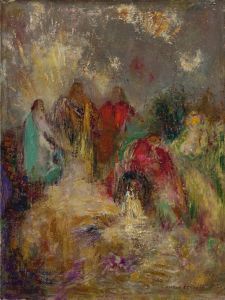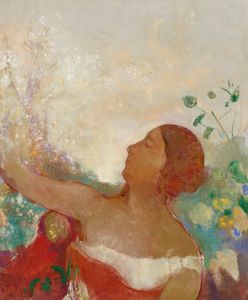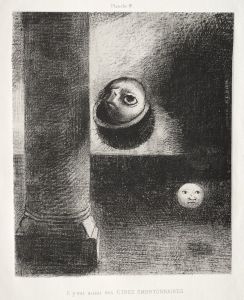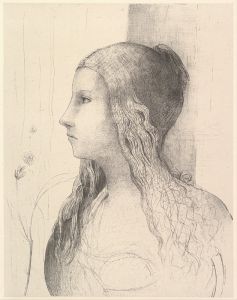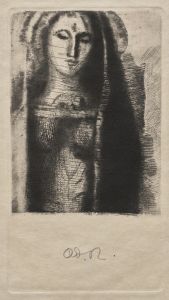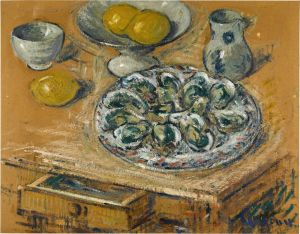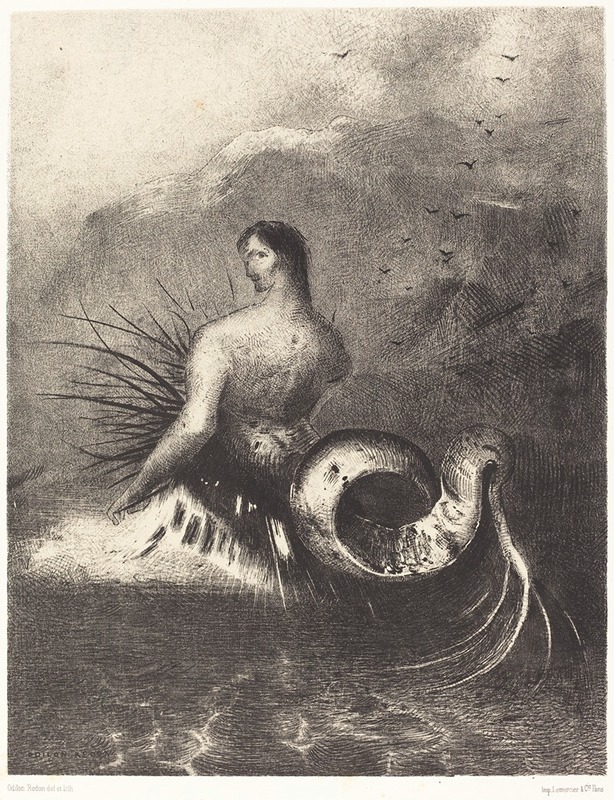
La sirene sortit des flots vetue de dards
A hand-painted replica of Odilon Redon’s masterpiece La sirene sortit des flots vetue de dards, meticulously crafted by professional artists to capture the true essence of the original. Each piece is created with museum-quality canvas and rare mineral pigments, carefully painted by experienced artists with delicate brushstrokes and rich, layered colors to perfectly recreate the texture of the original artwork. Unlike machine-printed reproductions, this hand-painted version brings the painting to life, infused with the artist’s emotions and skill in every stroke. Whether for personal collection or home decoration, it instantly elevates the artistic atmosphere of any space.
Odilon Redon was a French symbolist painter, printmaker, draughtsman, and pastellist, known for his unique and imaginative works that often explored themes of fantasy and the subconscious. One of his works, "La sirène sortit des flots vêtue de dards" (The Siren Emerged from the Waves Clothed in Darts), reflects his fascination with mythological and dreamlike subjects.
Redon was born on April 20, 1840, in Bordeaux, France, and he developed an interest in art at a young age. He studied under Jean-Léon Gérôme and later with Rodolphe Bresdin, who introduced him to etching and lithography. Redon's early works were primarily in black and white, using charcoal and lithography, which he referred to as his "noirs." These pieces often depicted fantastical creatures and dreamlike scenes, setting the stage for his later, more colorful works.
"La sirène sortit des flots vêtue de dards" is a part of Redon's exploration of mythological themes, a common subject in his oeuvre. The siren, a creature from Greek mythology, is often depicted as a beautiful and dangerous being, luring sailors to their doom with enchanting music and voices. In Redon's interpretation, the siren emerges from the waves, adorned with darts, which could symbolize the perilous nature of her allure.
Redon's work is characterized by its ethereal quality and the use of vibrant colors, especially in his later pastels and oils. He often drew inspiration from literature, music, and his own dreams, creating a body of work that is both introspective and otherworldly. His art is seen as a bridge between the 19th-century symbolist movement and the modernist movements of the 20th century.
The symbolism in Redon's work is often open to interpretation, allowing viewers to engage with the imagery on a personal level. His use of color and form invites contemplation and introspection, encouraging viewers to explore their own subconscious thoughts and feelings. Redon's interest in the unseen and the mysterious is evident in "La sirène sortit des flots vêtue de dards," as he captures the enigmatic nature of the siren and her connection to the unknown depths of the sea.
Redon's influence extends beyond his own time, impacting later artists and movements. His exploration of the subconscious and his innovative use of color and form can be seen as precursors to the surrealist movement, which emerged in the early 20th century. Artists such as André Breton and Max Ernst admired Redon's work for its dreamlike quality and its ability to evoke the mysteries of the human mind.
In summary, "La sirène sortit des flots vêtue de dards" exemplifies Odilon Redon's fascination with myth, fantasy, and the subconscious. Through his unique style and imaginative approach, Redon invites viewers to explore the depths of their own imagination, making his work timeless and continually relevant.






